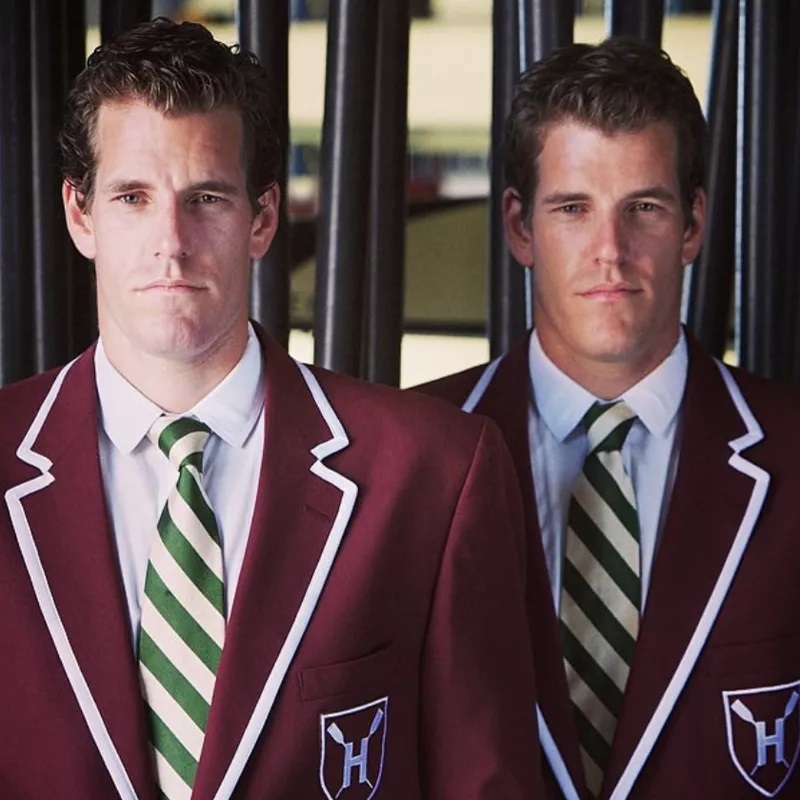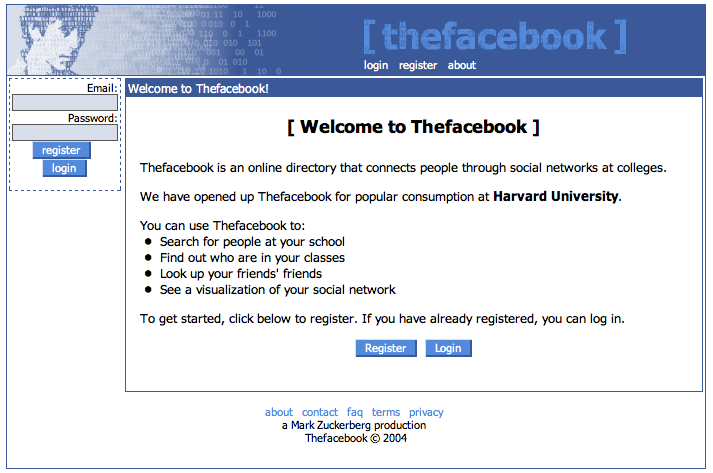
Facebook history – how did Facebook acquire its first 1M active users in one year since its launch? (13 min read)
Facebook – one of the most popular social media platforms with nearly 3 billion users as of 2022. It started as a campus project by Mark Zuckerberg, a Harvard's student. TheFacebook stormed US campuses and crossed 1 M active users in 2004. Mark was successful thanks to the simplicity and features his platform offered.

Facebook History Timeline Highlights
October 2003 – Mark Zuckerberg created www.facemash.com. Students could vote on “faces” they liked. The faces belonged to women studying then at Harvard.
Fall 2003 - Cucommunity (later CampusNetwork) was launched
By the beginning of 2004 – Facemash was down. It managed to score 450 visitors and 22,000 views of the photos uploaded.
January 11, 2004 - Mark created TheFacebook. He bought the domain for about $35.
February 26, 2004 – TheFacebook officially hit Columbia. It scored about 150 users in one week since launch.
February-March 2004 – Mark battled CUCommunity. It was Adam Goldberg's social network for Columbia students. TheFacebook won because of its simplicity and the surrounding strategy.
March 2004 – TheFacebook hit Dartmouth and Cornell. 1,700 Dartmouth's students registered their accounts on the same day the promotion email was sent.
By the end of May 2004 – TheFacebook already had 100,000 users. It was working at 34 schools.
June 2004 – Zuckerberg left Harvard and focused on Facebook. He teamed up with the Silicon Valley guys.
August 2004 – PayPal's founder, Peter Thiel, decided to give Mark a $0.5 M investment. Thiel called others for Mark's project.
September 1, 2004 – Facebook got the Wall feature. It was a big step forward. Now, its users could write posts on their friends' profiles and others could see them. Facebook crossed 400,000 active users.
October 21, 2004 – TheFacebook hit 500,000 active users.
By the end of 2004 – TheFacebook had 1M active users.
2005 – Zuckerberg decided to leave out “The” when he bought the “Facebook.com” domain for $200.000.
Fall 2005 – 85% of US students were using Facebook actively. 60% visited the site on a daily basis. Mark introduced his platform to high schoolers. At first, they had a separate server, and they couldn’t see the college users.
October 2005 – the site crossed 5M users. 10 times the previous year.
2006 – Zuckerberg’s team merged high schoolers with the students. Authenticity and privacy were the key traits of Facebook. That came at the cost of the pace of the user base growth.
Who came up with the idea for Facebook?
Cameron and Tyler Winklevoss, together with Divya Narendra, accused Mark Zuckerberg of stealing their idea for the social network platform. The three were seniors at Harvard. They claimed that Mark had agreed to create HarvardConnection with them, but then stole the idea.
They met in court. The judge decided that Zuckerberg was innocent because a simple online chat between students can't be seen as a binding agreement. The parties agreed to a compromise.
Getting inspiration
When making TheFacebook, young Zuckerberg got inspiration from his previous project, Facemash, and Friendster – a social media platform where he had an account as well.
Friendster encouraged its users to create their “virtual identities” that would represent who they are. That included their hobbies, things they liked, and personal information they wished to share. Zuckerberg aimed for the same.
Friendster's main use was searching for mates to date. Mark wanted to create something without any romantic or erotic context.
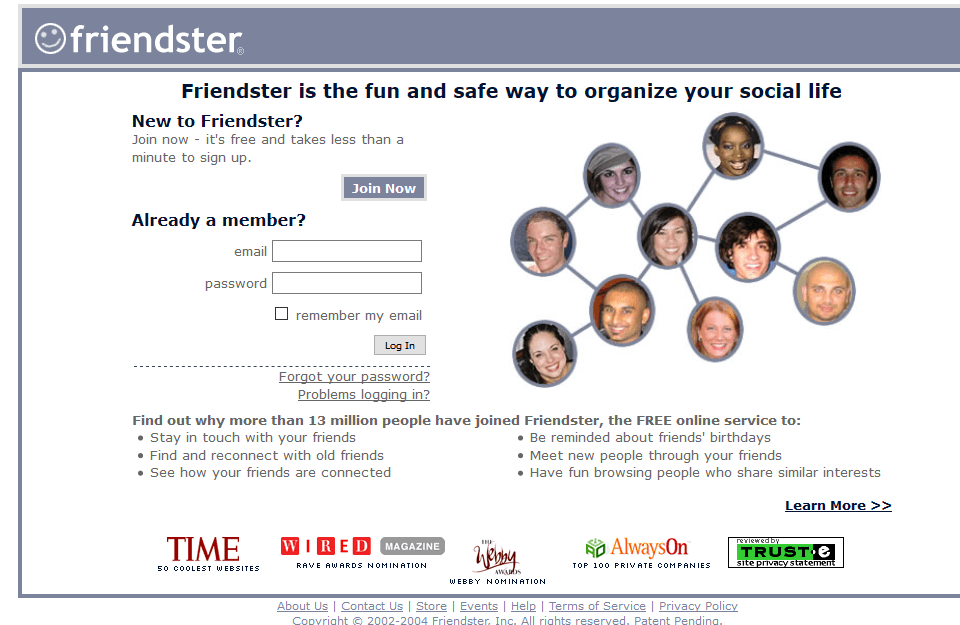
Facebook beginning story and hitting the big time for social media
In August 2003, MySpace stormed the Internet. It was much more popular than later Friendster, but somehow it didn't reach Harvard.
On December 11, 2003, The Harvard Crimson published an article about the end of Facemash. The text included a bunch of useful information on how a proper campus facebook should look like. It seemed like an invitation to Zuckerberg.
According to The Facebook Effect: The Inside Story of the Company That Is Connecting the World, Mark claimed that it was The Harvard Crimson with their articles on online facebooks that inspired him to design TheFacebook. Students needed it, and a lot of them were talking about it on a daily basis around the campus.
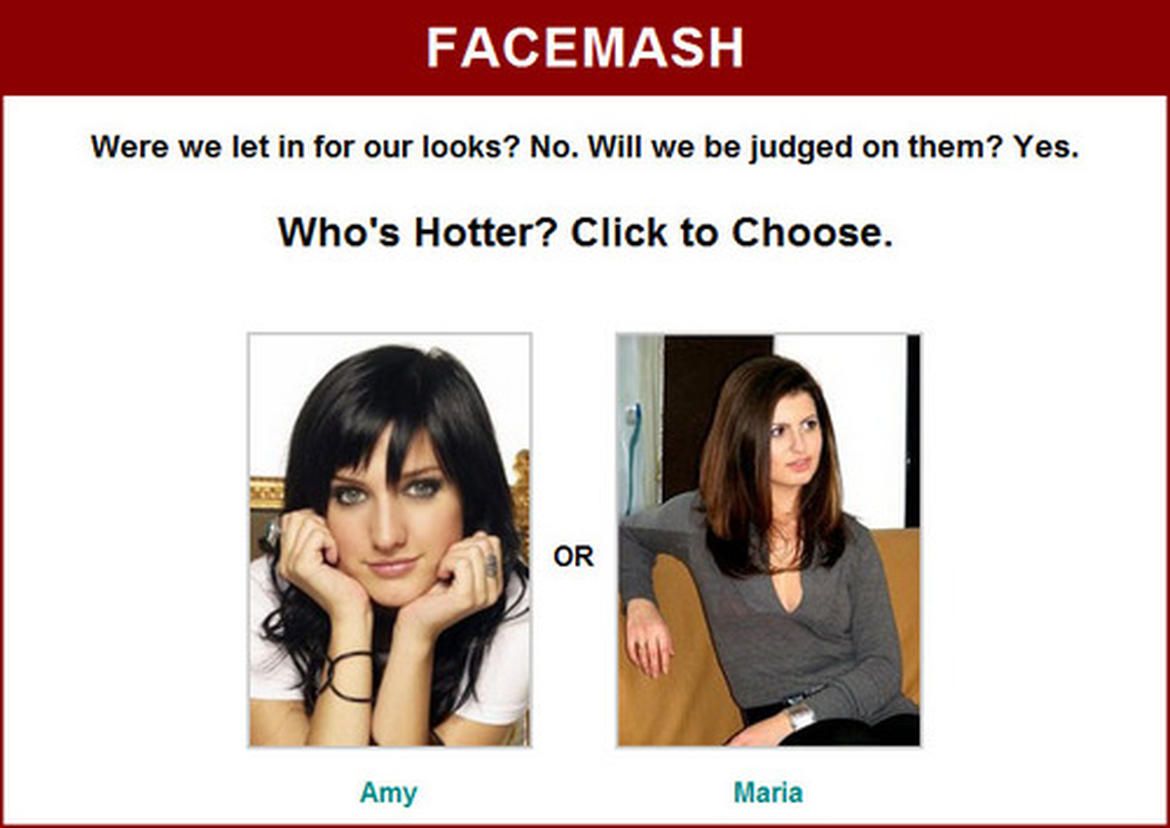
Why Facebook was created?
The main goal was to design a website, a social network that would enable all the students to learn as much as it was possible about the campus and their school.
Mark wanted everybody to share anything to anyone anytime they wanted to. Instead of focusing on dating and meeting people for just that purpose, Zuckerberg wanted something wider, more complex, and something that would answer students' needs.
Instant messaging turned into profiles' statuses
Another feature Mark has noticed that many people appreciated was the so-called away messages. Those were a kind of instant messages introduced by AIM (AOL Instant Messenger) back in 1997. The status updates we have today come directly from that AIM's feature.
Mark decided that TheFacebook would give their users the possibility to express themselves by putting whatever they want in their profiles' statuses. Those short messages with character limit could either describe the owner of the profile or be an important information about their plans for the weekend, and so on.
How Facebook got first users - beginning story
Once Zuckerberg launched TheFacebook on February 4, 2004, it started gaining more and more people through the word of mouth.
The first to join were Mark's neighbors from the Harvard's Kirkland House. Then, they sent emails to other students they knew. Those emails came with friend requests. Somebody made a suggestion to send emails to everybody on the Kirkland House mailing list. That gave about 300 people.
It went viral from that moment. By February 8th, there were 650 users registered. One day later, the number jumped to 950. That means Zuckerberg basically had his first 1,000 in about five days since launch.
Exclusivity
To register on TheFacebook, a user needed to give their email .edu address from the university at which they were studying. They were also asked to use their real name. That meant TheFacebook was exclusive to students and academic staff. It also made each profile more authentic, and the site looked safer.
This technique of validation made Zuckerberg's creation stand out from the other social networks available then (like MySpace or Friendster). When asked by The Harvard Crimson, Mark said that taking good care of TheFacebook's privacy policy was a way he chose to restore his reputation that Facemash had damaged.
The “shopping week” at Harvard
Mark launched TheFacebook when Harvard's shopping week was coming. It is a time when Harvard's students can choose the courses they want to attend.
TheFacebook allowed its users to set courses they were attending so that others could see. There was also an option to search for people by the courses you were interested in. It was a feature borrowed by Mark from Course Match, a dating social network for campuses. It helped students get to know each other. It also made it easier to share notes from lectures.
TheFacebook vs CampusNetwork – Facebook beginning story
Facebook started as a campus social network platform for students. Zuckerberg targeted the most popular universities and their campuses. He offered students the possibility to connect with their campus friends and stay in touch with them.
Once Mark's team hit Columbia University, they stumbled upon Adam Goldberg's CUCommunity, later called CampusNetwork. It started half year before TheFacebook and was much more advanced, but it had many features students didn't even need. Zuckerberg's solution was simpler and faster in using. His growth was also dynamic, and new features kept coming.

TheFacebook vs CampusNetwork and their Google-bombing e-war
In March 2004, CUCommunity's team announced the outbreak of the “google-bombing war.” Some Columbia students Google-bombed insulting phrases so that they would get associated with Zuckerberg's site by Google's search algorithm.
For example, one of such phrases was “CUCommunity ripoff.” It was a suggestion that Zuckerberg copy-pasted what he observed from Goldberg's work. CUCommunity was more complex than TheFacebook, and, according to its creators, that was another argument for its superiority over TheFacebook.
The whole story was largely commented on by the popular media and news sites, such as Columbia Spectator or The Harvard Crimson.
Later, when CampusNetwork was officially defeated by Mark, other sites, such as TechCrunch or The New Yorker got interested in Mark Zuckerberg's creation.
Why was Facebook so successful?
It turned out that features offered by CUCommunity were not needed by many users. Mark's solution was much simpler. Initially, TheFacebook'users could only upload their profile pic and write a short biographical note. They could also send and answer friend requests. Even the Poking feature came in only after some time.
Signing up on Zuckerberg’s website was also very simple. You needed only 3 pieces of information: your name, your email, and your unique password. That was a kind of innovation. Mark took care of his users' privacy. Other social networks required much more personal data from people. TheFacebook was simpler and safer. Many users didn't want to share such information online.
Media coverage at campuses
When TheFacebook hit a new school, the school's newspaper wanted to speak with Mark immediately.
The newspapers wrote a lot about Mark's platform, but he himself preferred to avoid interviews. He decided to get a press guy. Chris Hughes became the official spokesman of TheFacebook.
Facebook history and the surrounding strategy
It took Mark about one month since the launch of TheFacebook to reach Columbia (Feb 25th), Stanford (26th), and Yale (29th) campuses.
Having friends there encouraged students to sign up on Zuckerberg's platform. The greater the reach of TheFacebook was, the more people it was gaining over time. This way, Zuckerberg exponentially grew his user base.
Mark called it a market test. Campuses like Columbia, Stanford, and Yale already had their social networks at that time. Mark thought that if his thing made it through, then it would mean it's good. He was looking for a challenge.
Linking to college newspaper
One of the features that were later discontinued was linking people's profiles to campus articles. It showed all the articles that mentioned the particular user by name. It was possible thanks to the link between TheFacebook and the campus newspaper.
Advertising TheFacebook through email
In March 2004, Mark decided to expand to the Ivy League schools. On March 7th, TheFacebook launched at Dartmouth and Cornell.
Mark had a friend in the Student Service Committee at Dartmouth's Student Assembly. He promoted TheFacebook through the campus mailing system. The same day the email was out, 17,000 out of 4,000 Dartmouth's students created their profiles.
A similar promoting strategy was implemented earlier on other campuses. Sending an email through the campus system and promoting TheFacebook was one of the core elements of its growth.
At Stanford, Mark got access to the system thanks to the password he had got from his childhood friend. He could see all the email addresses, as well as the list of all the students and dormitories.
Cross-campus linking
At first, students from one school by default could see other students from the same school. They could also tighten up their privacy rules to hide their profiles from other users.
What was missing was the ability of cross-campus linking. People wanted to contact their friends from other campuses. Zuckerberg and his team decided to add such an option as they were getting increasing complaints about that.
The functionality was ready in 2004. It worked in such a way that both users could agree (or not) to link their profiles from different campuses. It gave the foundation for today's friend request.
A part of the campus culture
TheFacebook quickly became an important part of students' culture (especially at Harvard). People started creating their profiles before they even arrived at the campus.
It got nicknamed “freshmenu” because it enabled people to scan the campus community in the search for freshmen. When somebody met someone at a party or went to bed with them, they could quickly find their pics on the net and show them to their friends.
It was also connected with the sexual aspect of TheFacebook. There was an option to tick what is your marital status: single, in a relationship, or in an open relationship. In addition, the students could mark what they were looking for in terms of social networking. They could choose, among others, “date,” “relationship,” or “random play”.
Facebook spread like wildfire thanks to word of mouth
Besides email marketing through campuses’ mailing systems, TheFacebook spread through word of mouth. Many students invited their friends to join the platform because it let them stay in touch. People advertised it as something fresh and safe because “it started at Harvard.”
Facebook poke
Zuckerberg introduced poking on TheFacebook in 2004. The team didn't know what to say about that feature. An old FAQ page (which is no longer available) about poking stated that it could mean anything. The interpretation was left to the users. There was just that button to poke somebody, and all they could about it was to poke you back.
It soon became an easy way to flirt. When you didn't know what to say to a pretty classmate, you could find her on TheFacebook and try poking her. If she poked you back, perhaps you could have some chance with her. Rejection was also less painful if your poke went unnoticed or ignored.
Facebook Mini-Feed feature
In September 2006, Zuckerberg’s team introduced the Mini-Feed feature. It was something new because it let people write whatever they wished. It could be used in many ways, just like the Poke function.
Even more important is that others could react to your Mini-Feed’s content. One user could comment on another one, and a whole “comment battle” could start this way. It was a completely new way of engaging users. It made them stay online for longer and invite more people to the platform.
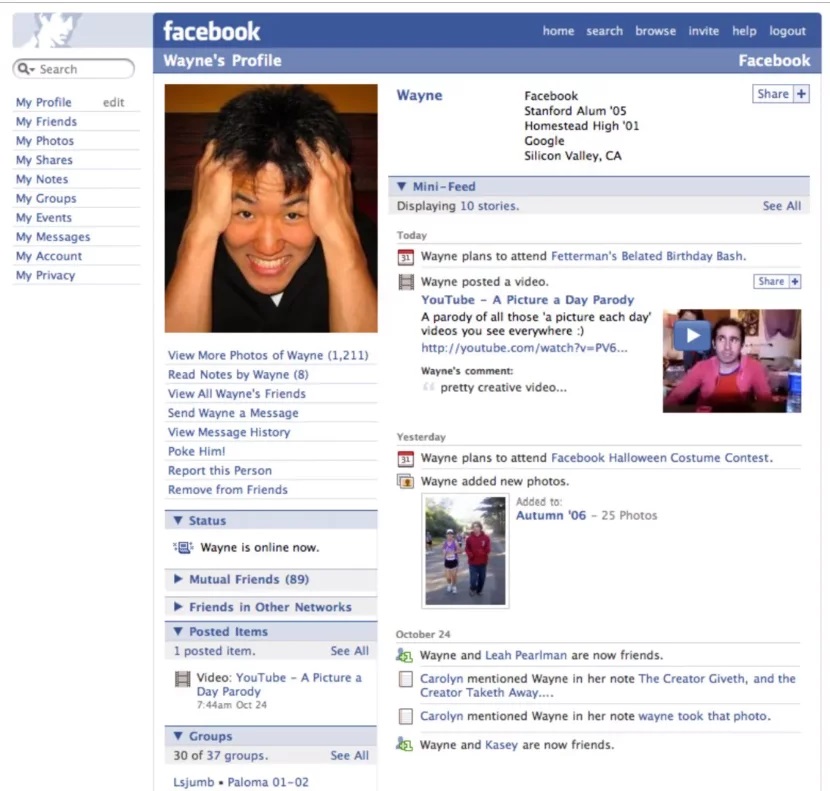
Facebook Groups
Groups appeared together with Wall in September 2004. It was a way to connect people with similar interests.
Anybody could create their own group for any reason. It emphasized their community. Groups had their own pages and Walls, just like regular profiles.

Quotes under the Facebook's search box
Mark loved good movies. He had a couple of favorite quotes from films like Top Gun or Troy. To emphasize the boyish, teenage nature of his company, he put some lines from those movies under the search box on his site.
Sometimes it could be something like “Now you know who you're fighting” from Troy, and other times – “Too close for missiles. Switching to guns” from Top Gun.
It turned out that it engaged students. Over time, they started arguing what “the author thought” when putting these lines. In fact, those quotes were put totally without any goal, just like the Poking function. And, just like Poking – they stormed campuses.
Students usually like watching movies, especially those most popular action films. The quotes matched not only TheFacebook's philosophy, but also its users' tastes.
The more friends you have, the better
Friending on Facebook became an important indicator of what kind of person you were. It soon got competitive enough for users to fight to have more friends than the others.
On campuses, in students' communities, being an outsider is perceived as weird and creepy. A long list of Facebook friends was a sort of confirmation that the particular student is outgoing and friendly.
They played it
The boyish style of TheFacebook, the movie lines, the Poking function, and so on – everything showed Mark and his team as a bunch of kids playing stuff. It was very natural and authentic. Without much corporate jargon, boring numbers, or statistics.
That style encouraged the users. Young adults, the students, mostly living the YOLO way of life, had it much easier to identify themselves with TheFacebook.
Also, Mark didn't fake it. He just lived it. He and his team were playing Xbox in their spare time. He liked video games and fast cars, and despite running a well-prospering business, he maintained the boy within. That could be felt by the students registering their accounts on Facebook.

One audience at a time
After Zuckerberg’s team conquered colleges and students, they decided to move on to the high schoolers. First, they stormed one target audience, then they started thinking about expanding. The “one audience at a time” strategy enabled Mark to focus his efforts on a specific niche.
Facebook hit high schools in 2005 when 80% of US students were already actively using the platform. At first, high schoolers got a separate Facebook, just for them. They couldn’t see the college users. It was to maintain the authenticity and privacy that were the signature traits of Facebook. Later, in 2006, both “Facebooks” got merged into something similar to what we have today.
How did Facebook make money?
Most of the sales were generated by advertising. TheFacebook’s team created AdSeed. It was a system similar to Google AdSense. Each brand, company, or any other media property could buy their “homepage” on TheFacebook. The program was giving Zuckerberg about $40,000 monthly from just the pilot customers. The name “AdSeed” was never used outside the initial plans and presentations.
In 2005, Facebook’s users were watching about 230 million Facebook pages daily. Zuckerberg was scoring around $1M in revenue per month from this method.

Thefacebook ad banners 2005

Bandwagon Effect
The more people do something, the more will follow them. When TheFacebook kept entering more and more campuses, more students got interested in the new social network.
Underdog Effect
People tend to support the side that is apparently weaker/smaller. Mark's project seemed to be much smaller than Goldberg's CUCommunity.
TheFacebook was simpler, had fewer features, and was something completely fresh in comparison with campus-popular CUCommunity. That difference also put Goldberg's guard down.
Cognitive Load
Too much information may cause confusion. We operate better if we are not stormed with data.
CUCommunity had many options and features people didn't need at that time. It was the beginning of the social media era. Students usually live in a hurry, which makes them focused on simpler, faster things. TheFacebook was exactly the solution they needed.
Fresh Start Effect
Zuckerberg's first attempt at social media was a “hot or not” kind of site for Harvard's students – Facemash. The fact that it got down pretty soon after its launch (Zuckerberg needed to hack Harvard's system to get access to students' photos and the data), made Mark want to try again.
TheFacebook was a new beginning, now with the help of others, and without breaking the law. It gave extra motivation to press on.
Authenticity Effect
Users needed .edu addresses to create their Facebook accounts. It gave some authenticity to the platform. Nobody from outside the campus could join. Everybody was authorized by the registering system, so it was seen as safer than other social networks available at that time.
IKEA Effect
We appreciate more things that we create ourselves. Mark gave his users a lot of freedom with Facebook. He moved the limits further and further.
First, the users could search for people they liked within their campus. Later, cross-campus networking was introduced. Then there came Poking and the Wall functionalities. People could use Facebook as they wanted. It made their profiles even more “theirs.”

Mark Zuckerberg knew that the product itself is not as important as the marketing strategy. People need to know about you in order to check your thing out. Zuckerberg started by finding the right target - US students living on campuses. Then, he hit all the local campuses, slowly moving on.
He did a lot with word of mouth and his own networking. Mark had many “useful” friends that helped him reach more and more people. Having contacts and knowing people that can do something for your business is a valuable trait. It can greatly boost your growth.
Mark wasn’t afraid to break some rules or play it on the edge. Getting access to the list of students’ email addresses together with their dormitories might be seen as a privacy breach. Still, it let Zuckerberg reach more people.
Facebook was great at fitting into its audience's mood. Mark targeted students and college folk. Those people always in hurry and looking for ways to have fun. Young Zuckerberg was much like it as well. He transferred that boyish nature onto TheFacebook. Matching your target’s taste is an excellent growth strategy.
Get your
"oh sh*t, this might work for us!"
moment in the next 5 minutes
Discover unconventional, easy-to-use, and low budget,
or cost-free methods of acquiring customers and increasing sales!
Viral marketing case studies and marketing psychology principles that made hundreds of millions in months or weeks
In the first email:
- a step-by-step strategy that made $0-$30M within 9 weeks with $0 marketing budget (case study)
- cheatsheet (PDF) of 10 biases in marketing used by top 2% companies
Other than that:
- weekly original content that helps you STAND OUT by providing more perceived value with less work
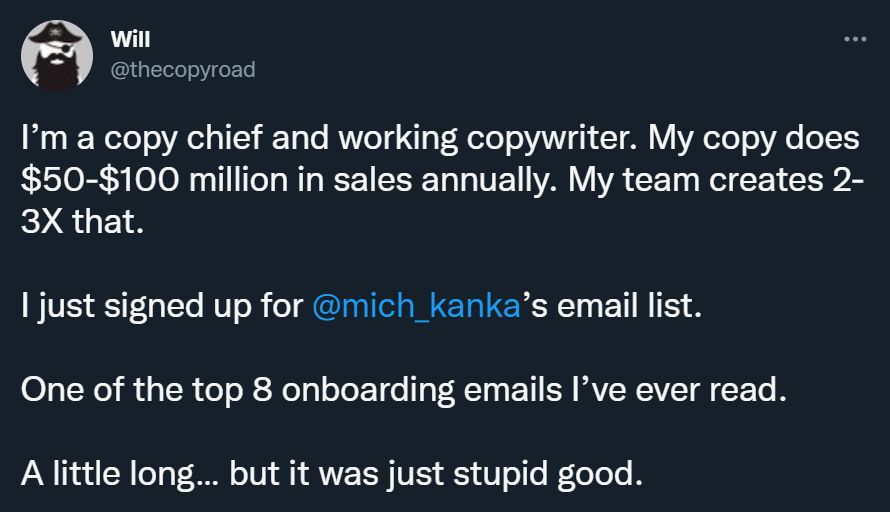
(You won't find it anywhere else)
Explore Cognitive Biases in Marketing
